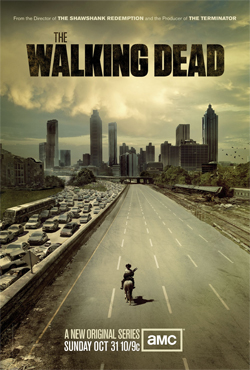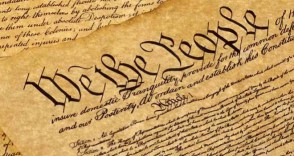
The intriguing imagery of the Great Seal on the back of the United States’ one dollar bill is cause for much curiosity and speculation. This has been a discussion amongst fans of the occult for decades, but in recent years the success of the movie “National Treasure” has brought the subject to the attention of popular culture and revived the myth that the symbols on the Great Seal represent a secret Masonic code. While it is true that several of the United States founding fathers were in fact Freemasons, it is not true that the United States One Dollar Bill contains any symbolism adopted from or inspired by Freemasonry. The true meanings behind the symbolism of the Great Seal on the dollar bill, while having a great depth of meaning is not so mysterious or esoteric.
The Symbolism
The Great Seal of the United States consists of a bald eagle spread with 13 arrows held tightly in his left talon. His right talon clutches an olive branch with thirteen leaves. Supported on the eagle’s breast is an escutcheon or shield containing a representation of the United States Flag-a blue field and 13 alternating red and white stripes. In his mouth he carries a banner which contains the Latin Phrase “E pluribus Unum.” Above his head is a radiant six-pointed star composed of 13 five-pointed stars.
On the obverse side of the Great Seal, found on the left side of the dollar is a representation of an Egyptian style pyramid with 13 layers and a flat, truncated top. Just above this sits an eye inside a triangle. At its base are inscribed the Latin numerals indicating the year 1776, the year of American independence from Britain. Circumscribing the image are the Latin phrases “Annuit Coeptus” above and “Novus Ordo Seclorum” below.
The Explanation
The repetition of the number 13 on the Great Seal and the United States Flag is a subject of great interest to conspiracy enthusiasts and occultist speculators who parrot inaccurate resources claiming the number 13 has special meaning to Freemasons. The fact is that the number 13 has no special significance to Freemasonry and never has. Freemasonry does place special emphasis on certain numbers such as 3, 5, 7 and 15, but not on the number 13. The number 13 does however, have a rather special significance to American history. The number 13 happens to be precisely the number of the American colonies who rebelled against Britain, becoming the United States. This is why the designers of the Great Seal emphasized the number time over again.
The bald eagle, the national bird of the United States was adopted from interaction with Native Americans. Many traditional Native American communities have considered the bald eagle the most sacred of all birds and a symbol of the Creator. The founders of the United States in imitation of their Indian neighbors adopted the bald eagle as the greatest symbol of freedom and liberty and the highest aspirations of the new nation.

The escutcheon resting on the eagle’s chest contains the symbol of the American flag. The last man who worked on the seal’s design, Charles Thomson described the meaning behind the colors of the flag and the other symbols in this manner;
“The colours of the pales are those used in the flag of the United States of America; White signifies purity and innocence, Red, hardiness & valour, and Blue, the colour of the Chief signifies vigilance, perseverance & justice. The Olive branch and arrows denote the power of peace & war which is exclusively vested in Congress. The Constellation denotes a new State taking its place and rank among other sovereign powers. The Escutcheon is born on the breast of an American Eagle without any other supporters to denote that the United States of America ought to rely on their own Virtue.”*
It is also interesting to note that the colors red and white are often used by Native Nations of the Eastern United States to represent war and peace respectively. Many of the Muskogean towns were historically divided into red-military and white-diplomatic communities which were loosely united under various confederacies. It should come as no surprise that the seal of the United States contains so much Native American symbolism when one considers the fact that many of these same founders had stormed a British ship during the “Boston Tea Party” dressed in war paint and feathers just a few years earlier.
The arrows and the olive branch held in the eagle’s talons represent two diametrically opposing principles that help to establish and maintain a nation; war and peace. The symbol of the arrows held together was adopted from the Iroquois Confederacy which influenced much of American democracy. The Iroquois used the image of seven arrows which represented the seven different ‘tribes’ who composed the Iroquois League. The symbolism teaches that one arrow alone (a single tribe) is easily broken, but all seven held together in a single common defense are much more difficult to break. The Founders of the US used the same symbolism, altered slightly to account for all the 13 United States. This coincides with the Latin motto displayed on the eagle’s banner; “E pluribus Unum” which translates as “Out of many, One,” illustrating the Union formed by these States. The United States is after all, many states which make up a single nation.
The olive branch is an ancient symbol of peace and vitality from western cultures. It was used widely by the ancient Mesopotamians, Greeks, Egyptians, Hebrews, Romans and Persians. The olive has been a widely adored fruit, the oil of which was anciently claimed to have many healthful and spiritual properties. The many designers of this seal used these two images of both the “Old World” and the “New World” to symbolize the integration of the new nation, based on both European and Native American ideals.
The pyramid side is sometimes called the spiritual side of the seal. The pyramid design was chosen as a symbol of duration, a nearly eternal nation and of the West’s ancient heritage, much of which has its roots in Ancient Egypt. It is important to note that people during the Enlightenment Era marking the democratization of the West were heavily involved in speculation upon ancient symbols and histories. This is also the era that birthed the remarkable discipline of archaeology.
The Eye of Providence sits at the pyramids zenith. Historically the All-seeing-Eye motif has been used by countless civilizations on all continents but interested parties who promote the Masonic Dollar theory like to point out that a very similar motif is in fact used by Freemasons today. This is true however; those who promote this theory often fail to recognize that during the Enlightenment the eye motif was used repeatedly by many different artists and organizations unassociated with Freemasonry. It is also often overlooked that the Eye motif had been an element of the design on the Great Seal since the seal was first proposed on August 20th, 1776 and finally adopted by Congress on June 20th 1782. Freemasons did not begin using the all-seeing-eye emblem until 1797 in “The Freemasons Monitor of Thomas Smith Webb” fifteen years after the Great Seal was finalized. In fact it is more likely that Freemasons adopted the motif from the Great Seal rather than the other way around.
The Latin phrase “Annuit Coeptus” means “He has favored our undertakings,” which refers to the founding belief that the success of the American revolution was a matter of divine Providence as can be found written in the Declaration of Independence. The next phrase is another point that conspiracy enthusiast enjoy kicking around like a rusty old tin can, telling themselves it’s actually a football.
“Novus Ordo Seclorum” does not mean “New World Order” as so often incorrectly translated. It means “New Order of the Ages.” It refers to the Founders recognition that they were creating a new order in a new era. They recognized that they had begun an age of reason, logic, and spiritual and practical liberty from dogmatic institutions. The new order was liberty, democracy and republicanism in opposition to the old order of submission to monarchical regimes.
The seal of the United States is a proud symbol of our heritage, our determination and our history. The symbolism reveals that we are one nation of many different people, unlike any other, striving for peace but prepared to go to war to protect each other. We are free and strive for more freedom. Our nation is divinely inspired and protected by God and its legacy will survive for as long have the ancient monuments of the past. The quest for freedom is not a conspiracy. That is the propaganda of tyrants. The quest for freedom is the nature of the human soul and our natural state, eternal and can never be crushed by the illegitimate rule of dictators.
* http://www.state.gov/www/publications/great_seal.pdf
-http:// masonicinfo.com/eye.htm
-Exiled in the Land of the Free; Democracy, Indian Nations and The US Constitution by, Lyons, Mohawk, Deloria Jr., Hauptman, Berman, Grinde Jr., Berkey, Venables
-http://en.wikipedia.o rg/wiki/Age_of_Enlightenment
-The Federalist by Hamilton, Madison and Jay
Like this:
Like Loading...











 it is also a gauge by which to judge an individual’s level of knowledge and insight. The four corners of the cross usually represent the four directions, each one associated with a particular animal or spiritual being, representing certain desirable attributes associated with them. In the book “Seven Arrows,” Hyemeyohsts Storm allegorically describes the process by which the individual may come to enlightenment by way of the Medicine Wheel, attaining the various attributes associated with each point and thereby becoming a complete human being.
it is also a gauge by which to judge an individual’s level of knowledge and insight. The four corners of the cross usually represent the four directions, each one associated with a particular animal or spiritual being, representing certain desirable attributes associated with them. In the book “Seven Arrows,” Hyemeyohsts Storm allegorically describes the process by which the individual may come to enlightenment by way of the Medicine Wheel, attaining the various attributes associated with each point and thereby becoming a complete human being.



